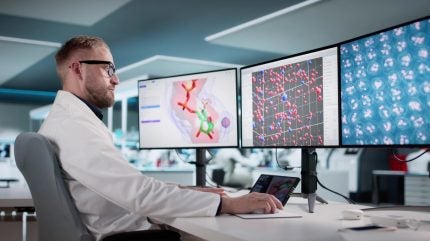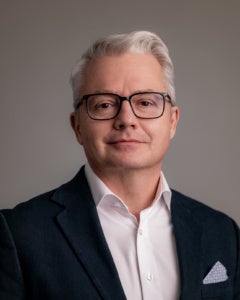
With complex biologics such as monoclonal antibodies (mAb), antibody-drug conjugates (ADCs) and cell and gene therapies (CGTs) attracting the attention of global big pharma companies, the scope of precision medicine has grown in recent years.
While these therapies hold great potential for patients and commercial revenues, they are often complex to produce at scale, which can complicate their road to market and subsequent uptake.
Traditionally, drug manufacturers have relied on Chinese hamster ovary (CHO) cells to produce large molecules. CHO cell lines were explored for manufacturing biological products in the 1970s, and have since helped produce high yields of recombinant proteins with complex post-translational modifications.
However, Eleva Biologics CEO Björn Cochlovius notes that the use of CHO cell lines alone in protein manufacturing could be holding the industry back. In an interview with Pharmaceutical Technology, he discusses the challenges involved in manufacturing therapeutic proteins, and how they can be overcome with current and future technologies.

This interview has been edited for length and clarity.
Annabel Kartal-Allen (AKA): Is the industry close to being able to manufacture every type of protein for therapeutic use?
Björn Cochlovius (BC): Currently, no – and that’s a big issue. Innovation is moving at a rapid pace in terms of molecular design – especially in the world of antibodies. However, from a manufacturing perspective, there has not been much change.
To achieve large scale production, I believe the main step is to accept that manufacturing innovation needs to happen. However, I think the ‘pain level’ amongst the large industry players must increase a little more before they realise something must be done.
AKA: What are the current challenges associated with protein manufacturing using CHO cell lines at a commercial scale?
BC: CHO cell lines are very good for producing standard molecules like antibodies and smaller proteins. However, it is very difficult to scale-up manufacturing to industrial volumes when producing complex molecules like bispecific antibodies, larger enzymes, or antibody-cytokine fusion proteins.
This is because the cell line is very sensitive to temporal and pH changes, and often does not deal well with complex bonds such as disulfide bridges. They are also difficult to manipulate genetically.
The cost of goods associated with the scale-up process is also high, meaning that companies must often work with low margins.
The industry is looking to bring these molecules to patients, but in many cases, they give up, which in some cases I believe is due to difficulties in scaling-up CHO cell line-based manufacturing protocols.
Issues with innovation are also present, as big pharma mostly depends on contract development and manufacturing organisations (CDMOs) for new manufacturing technologies, as developing these tools isn’t often in their remit. The same can be said for big CDMOs focused on large molecules, as these companies are not typically innovating to solve CHO cell line-related issues.
Both big pharma companies and large CDMOs are often reluctant to bet on new technologies with little proof behind them, meaning that their time to market and general uptake will be relatively slow; it takes a long time for them to be accepted. It can be very hard for such organisations to embrace innovation.
AKA: How can the biomanufacturing industry overcome issues associated with producing therapeutic proteins?
BC: Emerging novel technologies will help the industry solve certain problems within the protein manufacturing field. I don’t believe we will see one dominating technology such as CHO cells again, but I imagine there will be a couple of very specialised, novel technologies designed for a certain molecule type that will solve specific issues.
For example, Eleva managed to produce recombinant Factor H, a protein involved in the regulation of the complement system, which the industry had previously failed to produce for over a decade. We achieved this through the use of a moss-based expression system, which has allowed us to bring CPV-104, a recombinant Factor H, to early-stage clinical trials.
Hopefully, the future will bring more technologies, so companies can selectively choose which is best for their intentions and the molecule type they’re working with.
AKA: Do you think the industry will shift away from using CHO cells?
BC: When you go to protein engineering conferences, most of the presentations are about how to improve CHO cell lines and solve inherent issues. This means that people are trying to improve a model fraught with challenges, rather than building a new and better method, which I find striking.
I do not believe CHO cells will be removed from the equation in the near term, as everybody is working with that system. Billions of dollars have been invested to create production facilities working with this method, so the industry will not quickly move away from that technology. The costs would also be tremendous, and it is not always necessary to change everything.
While CHO cells will likely remain a popular expression system, alternative technologies will likely grow in volume and importance in the coming years.
AKA: What would be the best use cases for alternatives to CHO cells?
BC: There are two fields in which alternative methods could shine. One area is the manufacturing of large native proteins found in the body, such as enzymes, as CHO cell lines have always proven problematic in these fields.
The second would be antibody derivatives such as bispecifics and antibody-cytokine conjugates. Both these fields need some alternatives, as it is typically very challenging to produce these types of proteins at scale with CHO cells.
AKA: How would the industry benefit from using novel protein manufacturing technologies?
BC: The pharmaceutical industry is always looking to create more precise medicines for patients, as this means we can better treat them. To achieve this, we need precise molecules, which become more complex the more we work on them. These often work well on a small scale – in vitro or in animals – with CHO cells, but as soon as you scale up, many systems incorporating this cell line can no longer make them.
This is making companies realise that it doesn’t make sense to drop so many projects. By using novel methods, we have the chance to rescue such projects and see them through.
AKA: Do you ever see CHO cell line alternatives becoming mainstream in protein manufacturing?
BC: I would say it may take five to ten years until alternative methods are embraced by the industry at large.
While Eleva is not a service provider, we have started licensing out our CHO cell line alternative to CDMOs such as 3PBIOVAN. They were the first to work with us, and now others are following. With other emerging alternatives to CHO cells, there will likely be a stopgap until somebody believes in the technology and works with them, though this process always takes time.







